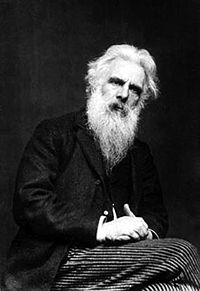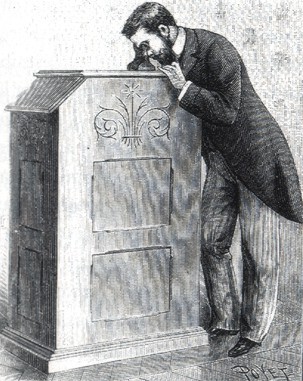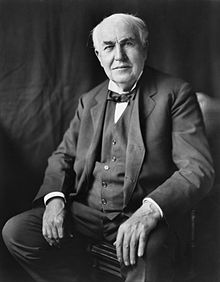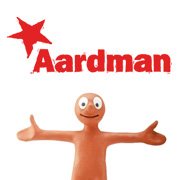History of animation
The Thaumatrope, which means "turning marvel" or "wonder turner", was a very popular victorian toy, the toy consisted of a piece of card with a picture on both sides attached to two pieces of string. Once the string is twirled fast the two pictures combine into one due to persistance of vision. It was mainly used for entertainment but was less interesting when modern cinema was developed. The invention of the Thaumatrope is usually credited to either John Ayrton Paris or Peter Mark Roget.
Persistance of vision was the theory that the eye would maintain images for a fraction of a second. This would then mean that images we see are a subtle blend of what we are looking at now but also what we have just seen.
Frame rate is the frequency in which an image is shown, the faster the frame rate the more smoother the image will appear. There are three main standards in which are used in TV and film these are 24p,25p and 30p. Low frames per second do not show the illusion of moving images efficiently.
Stop-frame animation is a form on animation in which makes inanimate objects appear to move on their own. When creating this effect the animator takes one picture, moves the object then takes another, this process is repeated until enough pictures are taken to then put together and create the animation.
You could also use plasticine to create stop-frame animation this is known by a different name called 'clay-mation'. Example of this would be Wallace and Gromit. Animation 'works in 2s', what this means is that only 12 frames show in every second of motion.
The Zoetrope is a device that produces the illusion of motion from a fast paced sequence of still images. These images are hand drawn and or painted onto a white paper strip which is then placed within the inside of the Zoetrope. Then the viewer would look through the small slits in the zoetrope to then see the illusion of motion from the still images.
William Horner was a British mathematician and invented the Zoetrope in 1834, this was a very popular palor toy until modern film technology. Horner originally called the device a daedalum, which means "wheel of the devil."
This device is similar to the Phenakitoscope. The Phenakitoscope is a device which is one disk attached to a handle and on the outside of the disk are the different drawn images with equal size slits in between the images, once the disk is spun the images appear to move due to persistance of vision.
This device was invented by Joseph Plateau, a belgian physicist in 1832. Plateau was the first person to demonstrate the illusion of a moving image.
The way Plateau discovered the illusion of moving images was because of his invention the Phenakitoscope, without this he would have never found out.
The Praxinoscope was a successor to the Zoetrope, like the Zoetrope this device also used a strip of images inside the cylinder of the device. The reason the Praxinoscope improved on the Zoetrope was because it replaced its narrow viewing slits with an inner circle of mirrors. This then enables the viewer to see the images in better light and more clearer than the Zoetrope.
The Praxinoscope was invented by Emile Reynaud, a french science teacher in 1877. He was also the first to show cartoon films on a public screen. The main idea for the praxinoscope was to amuse young children. Reynaud's most famous animation was the trapeze.
Edweard Muybridge was an English photographer and was most known for his work in motion picture projection. He then immigrated to the United States and in 1874 he shot and killed Major Harry Larkyns, his wife's lover, and was acquitted in a jury trial on the grounds of justifiable homocide.
Muybridge was hired by Leland Standford in 1872 to research if all the hooves of a horse could be off the ground at once. He proved Standford right but also created revolution for motion picture photography. Muybridge is known for his horses as he proved Standford's theory.
The Kinetoscope was known as the motion picture exhibition device, the original idea for the Kinetoscope was for the person using this device to see the motion picture through the viewer at the top of the device. Unfortunately only one person at a time could view this motion picture. The Kinetoscope introduced the basic approach that would become the standard of all cinematic projections. In 1894 the first exhibition was given of these devices, there was ten in one line showing the same motion picture. This device was invented by Thomas Edison in 1888.
Thomas Edison was an American businessman as well as an inventor. Edison held 1,093 US patents to his name. In addition to inventing the Kinetoscope, Edison also was credited to other inventions to do with telecommunications such as stock ticker, recorded music and motion pictures.
The Lumiere Brothers, Auguste and Louis, were the earliest filmmakers in history. The brothers worked for their father at his photography firm, it wasn't until their father retired that the brothers began to create moving pictures. The brothers did not stop there, they invented the device called the Cinematograph, this device was a motion picture film camera as well as a film projector and developer. The cinematograph itself was patented on 13 February 1895 and the first footage ever to be recorded using it was recorded on March 19, 1895. This first film shows workers leaving the Lumière factory.The cinematograph was the start of the revolution of motion. pictures.
George Pal was a Hungarian-born, American animator and film producer. His most famous animation was the series called the puppetoons which he created in the 1940s. The puppets for the series were carved and in each frame the puppet would change, the process for this is called replacement animation. In addition Pal then turned to live action filmmaking and created The Great Rupert(1950).
Willis O'Brien was an Irish American special effects and stop motion animation pioneer. Willis O'Brien helped create so many well known film, for example King Kong(1933) and The Lost World(1925). O'Brien won an academy award for Best Visual Effects in 1950, this was just a small recognition of what O'Brien had done for the animation industry. He was also hired by Thomas Edison to animate some short film with prehistoric a theme.
Ray Harryhausen was an American visual effects creator but also a writer and producer. 'Dynamation' was his brand of stop-motion animation models. Harryhausen's most famous work was the film Mighty Joe Young(1949), this film won an academy award for special effects, in addition this film he created with special effects pioneer Willis O'Brien.Harryhausen draws a distinction between films that combine special effects animation with live action and films that are completely animated
such as the films of Tim Burton.
Jan Svankmajer was a Czech filmmaker and artist. Jan is mainly known for his surreal animations, these then influenced many other people for example Terry Gilliam. Jan gained reputation for the use of the stop-motion technique but also how he made surreal yet funny images. Jan usually creating animations of inanimate objects and giving them life was a different approach to stop-motion but worked so well.
 Stephen and Timothy Quay are American identical twins, they are more known by the name of Brothers Quay or Quay Brothers.These brothers are known to be infuencial stop motion animators. According to the brothers Czech filmmaker Jan Svankmajer is cited as a major influence even though they did not discover Jan's work until very late on. Jan was such an inspiration they even named one of their films after him called 'The Cabinet of Jan Svankmajer'. Most of their animation films feature puppets made of doll parts and other organic and inorganic materials, often partially disassembled, in a dark, moody atmosphere.
Stephen and Timothy Quay are American identical twins, they are more known by the name of Brothers Quay or Quay Brothers.These brothers are known to be infuencial stop motion animators. According to the brothers Czech filmmaker Jan Svankmajer is cited as a major influence even though they did not discover Jan's work until very late on. Jan was such an inspiration they even named one of their films after him called 'The Cabinet of Jan Svankmajer'. Most of their animation films feature puppets made of doll parts and other organic and inorganic materials, often partially disassembled, in a dark, moody atmosphere.Tim Burton is an American film director, film producer, writer and artist. Tim has created so many well known films but his main well known ones would be 'The Nightmare Before Christmas' and 'Sleepy Hollow'. Tim has created many close friends since doing films one has been actor Johnny Depp and another was musician Danny Elfman. Burton has directed 16 films and produced 12, as of 2012.
Aardman Animations is a British animation studio which is based in Bristol, United Kingdom. The studio is well known for Wallace and Gromit, which are stop motion animation films made from plasticine characters. In addition it entered the computer animation market with 'flushed away'. As well as Wallace and Gromit, Aardman also created the hit film 'Chicken Run' and the short TV series called 'Creature Comforts'.
In the cinema there have been many animation releases, some good, some bad. In the earlier days most of the animation releases were not shown at cinemas but just small gatherings of a projection of the film. In 2010 'Pinocchio' , a stop motion animation film was released and was a big hit even though that stop motion is not used that much anymore and computer generate images is taking over.
TV animation is mainly used for childrens cartoon programmes, which are very interesting to children of all ages and are very well prepared before being shown, some are simple but are the most attractive with characters the children enjoy watching. On the other hand there are animation programmes that are not for children such as family guy, american dad and south park, although they are not for children they still have a huge audience watching these animations but the best would be the simpsons, this programme has been going on for absolutely ages and is still going today but has improved since the programme began.
Channel Idents are used to promote the channel the ident is on, they do this by doing a short speech of the channels name or showing a short video with the name of the channel on, and either during programmes or after programmes. For example BBC One have many short videos to promote themselves.
Animated music videos are becoming increasingly popular as they are a lot cheaper to produce compared to live action music videos, in addition to this some of the most simplest animated music videos can still be very popular. Most official lyric videos are simple animations in the background and then the lyrics appear on screen. On the other hand 'Gorillaz' use animated music videos for their songs and lots of people enjoy them.
Stop motion animation in mobile phones. Stop motion animation within the phone industry can be quite useful as there are apps but one app in particulaer called 'Stop Motion Recorder', this app allows users to create a stop motion film on their mobile with little effort.
Stop motion animation in websites. Stop motion animation is occassionally used on websites to promote competitions or channel idents. This is a simplistic form of promotion but can be very effective.















Zac,
ReplyDeleteWell done for completing all of the work on time. This Blog post currently meets grading criteria for P1.
In order to achieve M1 and aim for D1, you must add far more detail on why certain pioneers and developers have been mentioned, e.g., why are The Brothers Quay pivotal in animation? What does Tim Burton do that's so unique? What actually is dynamtion and why was it so innovative and what did it lead to?
Let me know if you would like any more guidance/help.
EllieB
IMPORTANT - PLEASE DO NOT DELETE COMMENTS - EVEN WHEN CHANGES HAVE BEEN MADE!
ReplyDelete